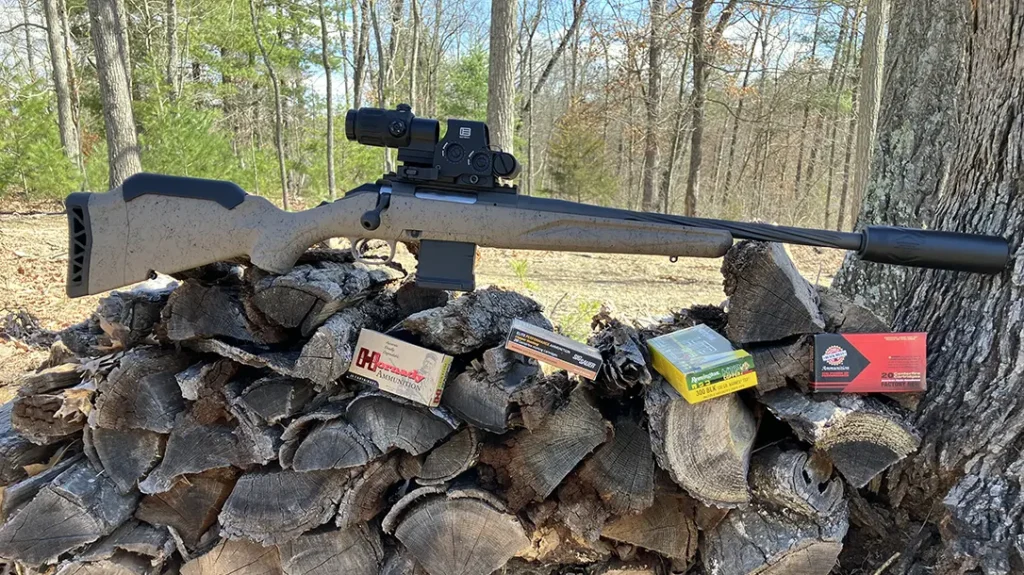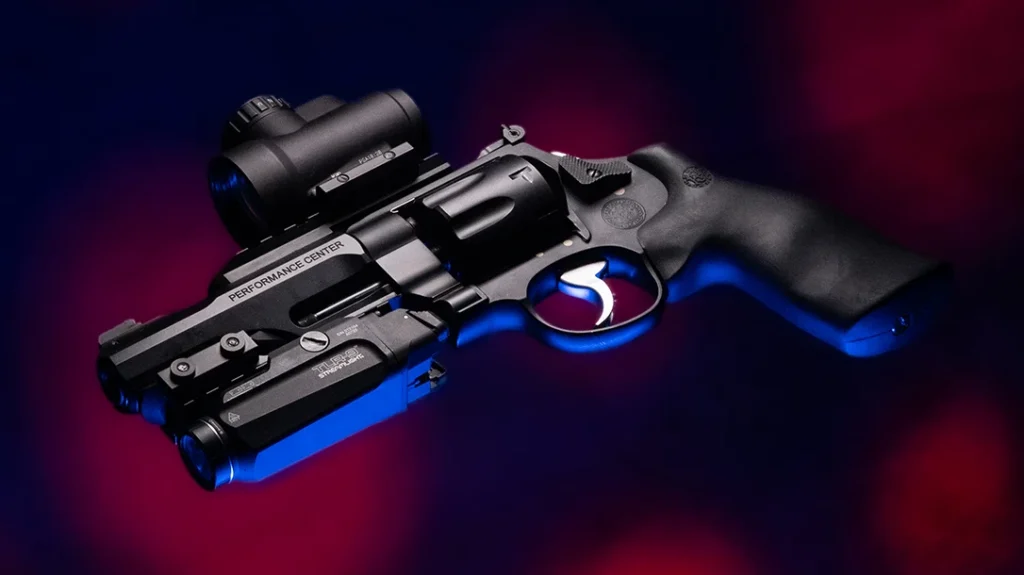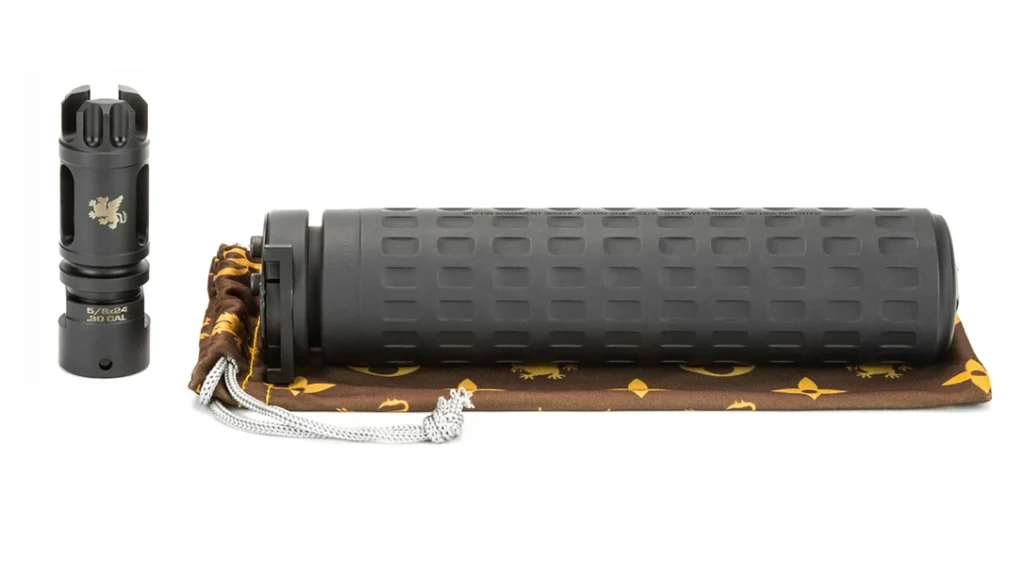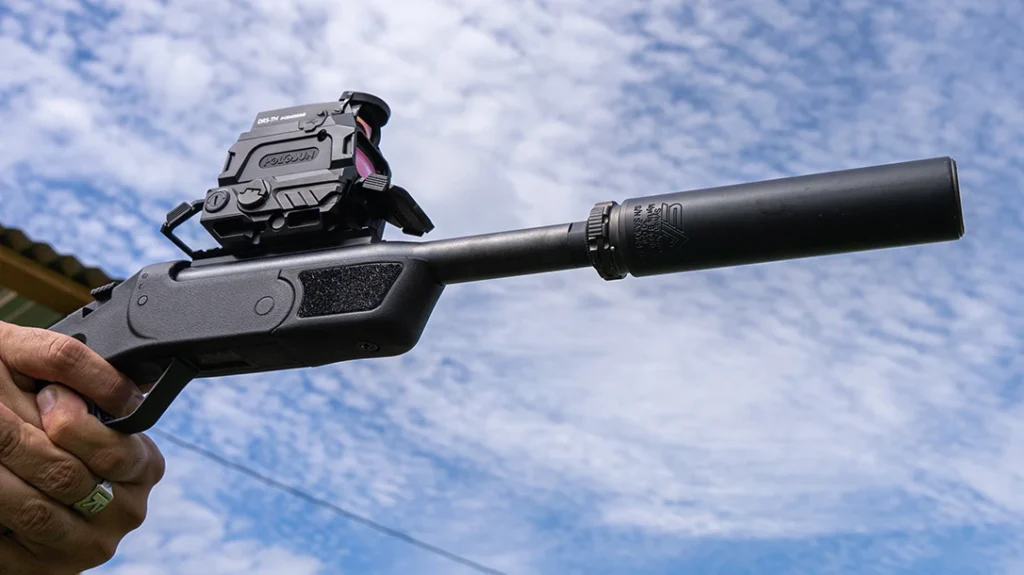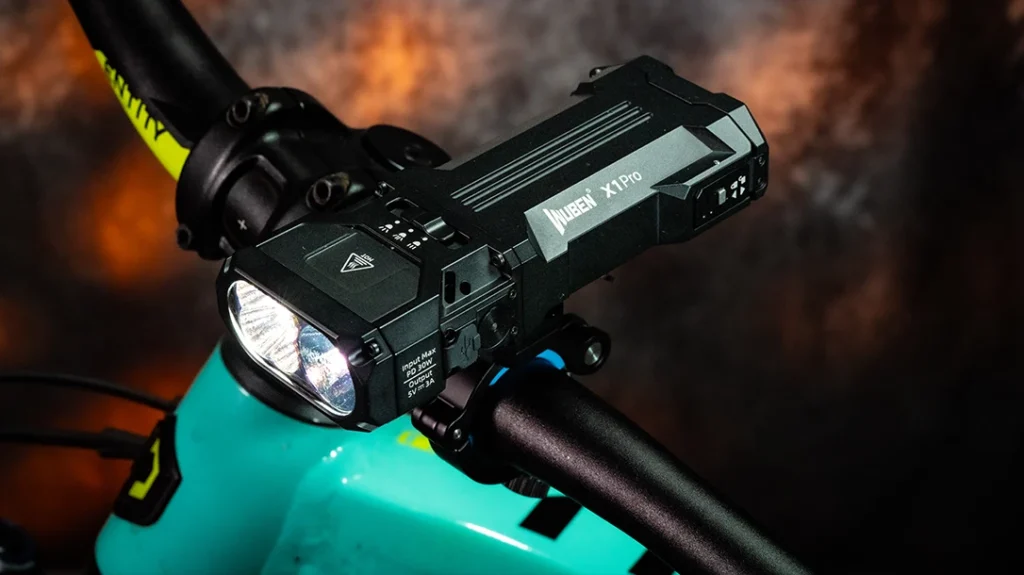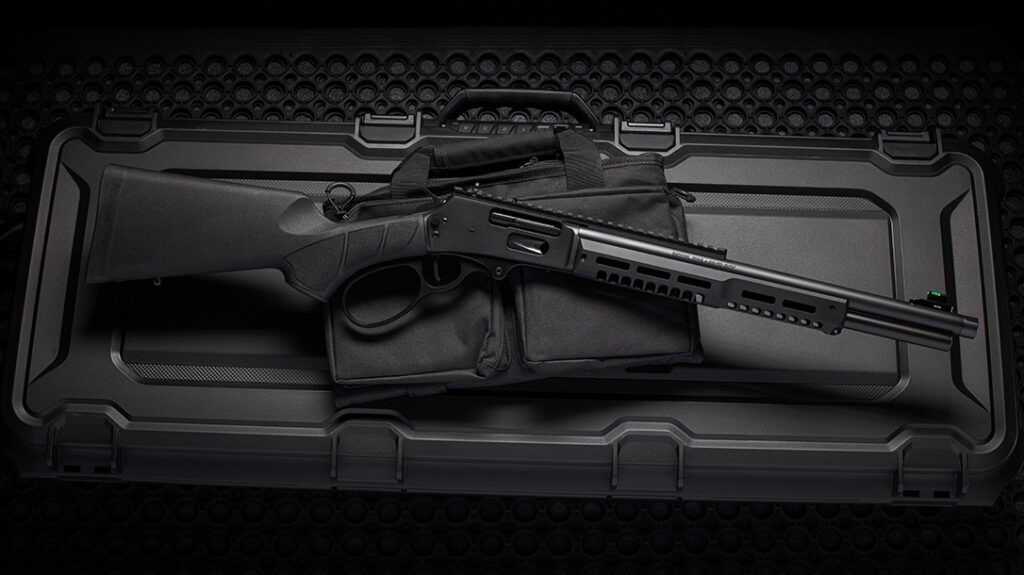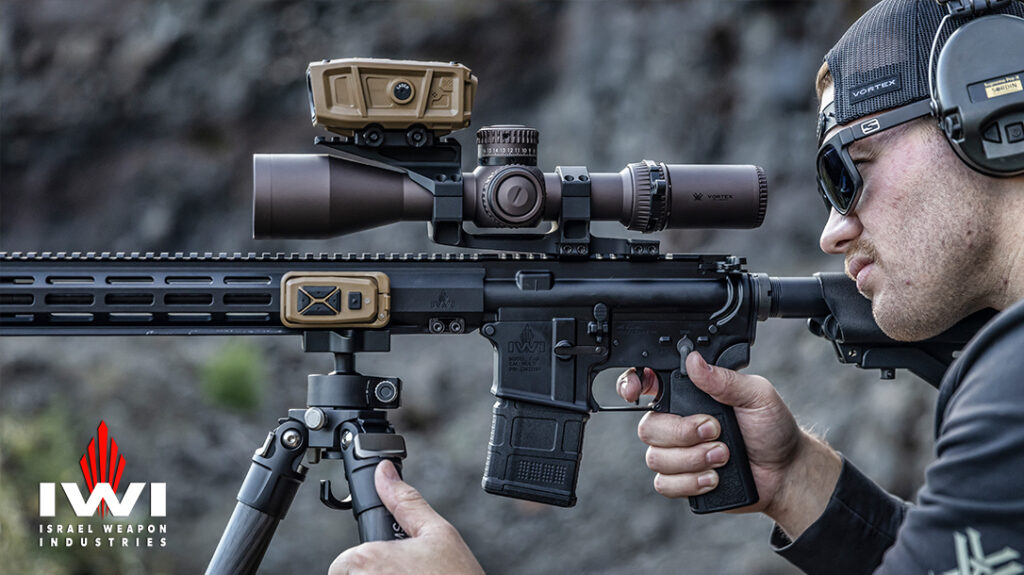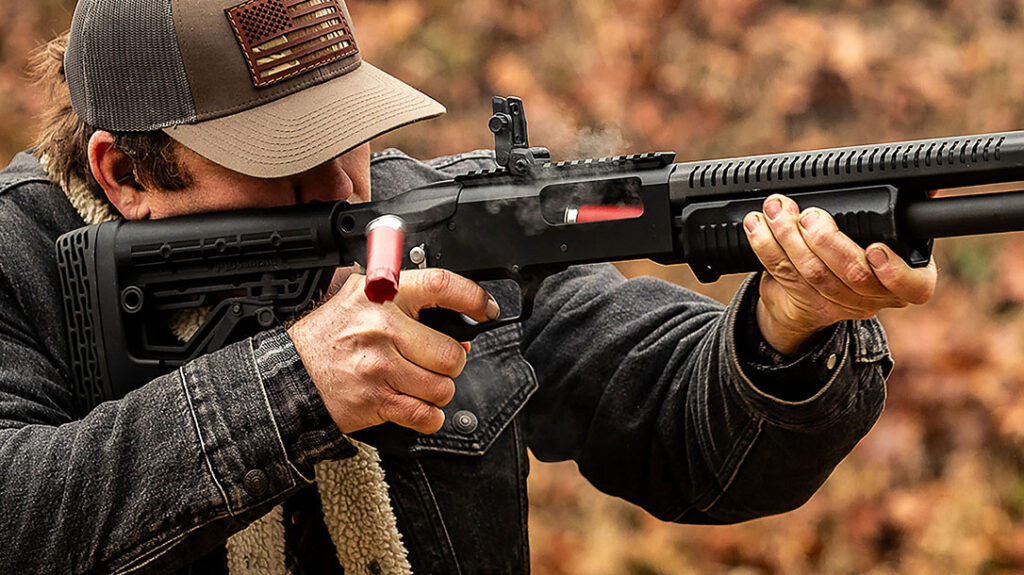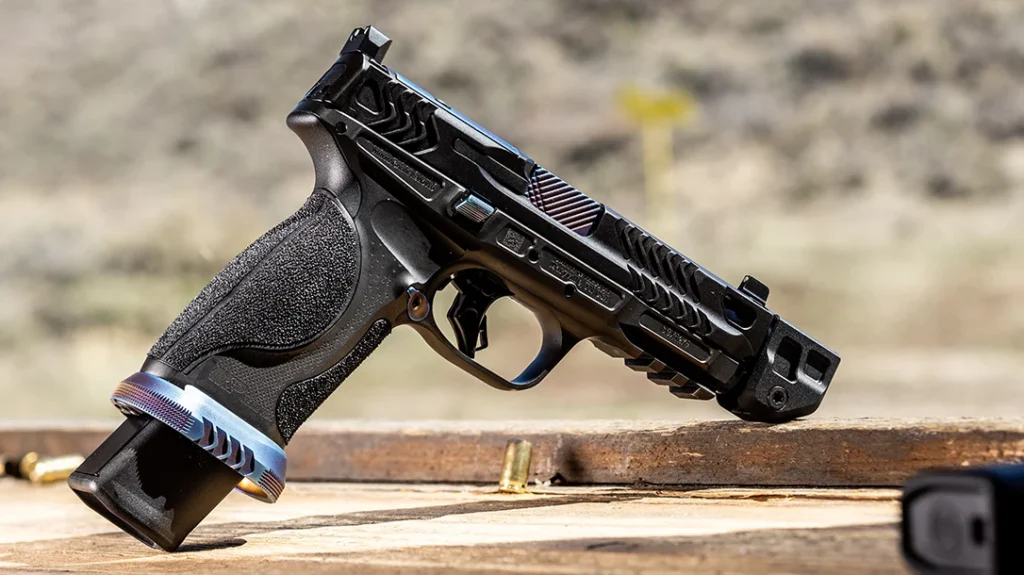Back in 1990 when the Glock 21 was originally launched, that particular polymer-framed striker-fired pistol breathed new life into the .45 ACP cartridge. Compared to the low-capacity traditional single-stack 1911, the Glock 21 was heralded as the modern go-to platform choice for .45 ACP shooters. Then Fast-forward to 2014. That year at SHOT Show, Glock launched the Glock 41, a Gen4 longslide version of the Glock 21. A year later, Glock followed up by launching the MOS optics-ready version of the Glock 41, the Glock 41 MOS. Carrying a Glock 41 MOS means you get thirteen 230-grain JHP “flying ashtrays” in your magazine. In addition to a 5.3 inch barrel, the Glock 41 MOS also provides an optics-ready platform via the MOS system. Best of all, the Glock 41 MOS weighs slightly less than an empty steel-frame 1911.
Gen4 Upgrades
Though several Glock pistols are currently on their Gen5 iterations, the Glock 41 MOS remains a Gen4 model.
In a nutshell, fourth-generation Glock pistols reflect a combination of both ergonomic and internal changes from the prior three generations.
Advertisement — Continue Reading Below
- Gen4 models were Glock’s first pistols to have interchangeable backstrap inserts. These can be changed by removing a single pin from the rear of the frame. This also meant that Gen4 grips were thinner than the previous generation. To make them larger, the end-user could add the included interchangeable backstrap inserts.
- Gen4 models saw a different style of grip texture that’s still in play with Gen5 models.
- Gen4 Glocks saw a newer and larger reversible magazine catch.
- Glock did away with the original singular captured recoil spring assembly and introduced a newer dual-spring RSA.
- Glock tweaked Gen4 trigger bar layouts, which is supposed to increase that part’s life expectancy.
- Glock’s MOS system offers interchangeable plates facilitating the mounting of different red dot optics with their various footprints.
Glock 41 MOS: Not your Typical Glock Pistol
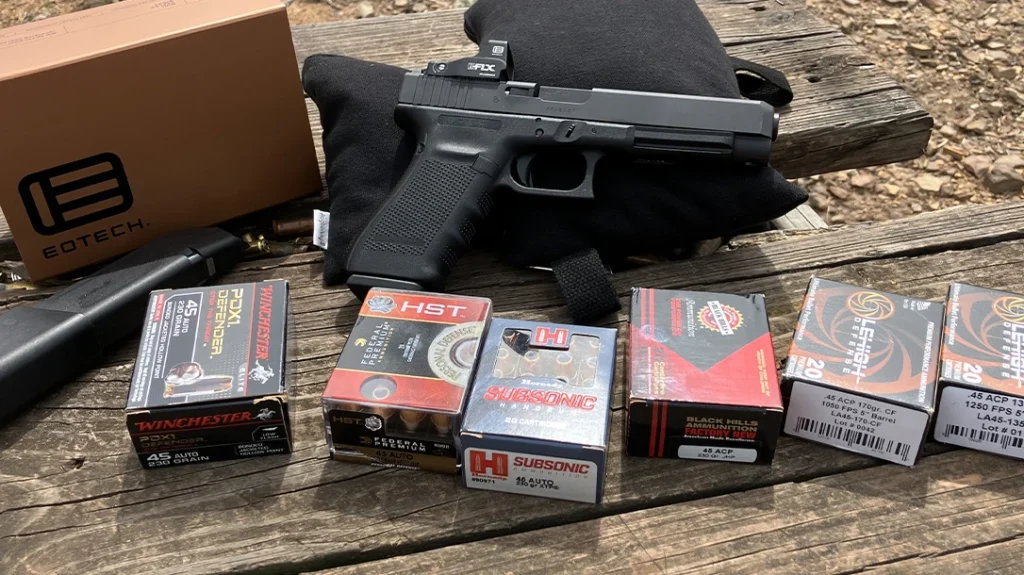
The Glock 41 MOS sits apart from most other Glock handguns. At 8.8 inches in overall length, it’s one of Glock’s longest products and is an instance where size does matter. These pistols have very long sight radiuses at 7.6 inches. Compare that to the 1911’s 6.8 inch sight radius. With modern pistol-mounted optics in play, sight radius is a somewhat moot point. However, the 41 MOS’ 5.3 inch barrel can bump up muzzle velocity. Proven Glock-style ergonomics combined with the slide’s long tracking during recoil smooth out .45 ACP recoil impulse. This allows for a very stable sight picture, no matter how many or how rapid rounds are fired. A mounted red-dot sight really tells the story here, with the dot never hovering too far above the aiming point.
The 41 MOS represents the quintessential balance of size, weight, capacity and cartridge potency. Another Glock 41 MOS specific nuance is its slimmer slide. Its slide actually more closely resembles that of a Glock 17’s slide in comparison to a Glock 21’s. Even though the Glock 41 has a longer slide and barrel, the thinner slide makes it weigh less than the typical Glock 21. Empty, the Glock 41 MOS weighs 27 ounces, a few ounces less than the Glock 21.
Advertisement — Continue Reading Below
Eyes Wide Open
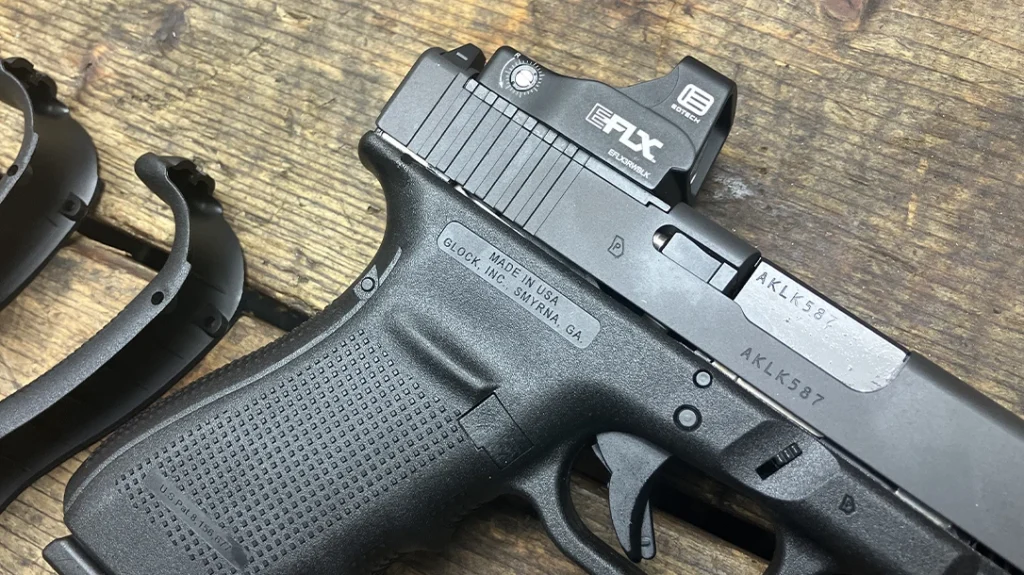
I mounted an EOTech EFLX red-dot sight to my Glock 41. The EOTech EFLX uses a top-mounted CR2032 battery offering 20,000 hours of run time. The EFLX mounted on featured a 3MOA dot with 6MOA also available. EFLX’s aluminum housing offers durability while still only weighing 1.4 ounces. In addition to adding the red-dot, I also added a set of Meprolight Mepro Tru-Dot suppressor height sights. I really appreciate having co-witnessing iron sights on handguns with red-dot sights.
My test-firing included .45 ACP ammunition from Federal, Winchester, Black Hills, Wilson Combat and Hornady. These Loads fired ranged in bullet weights from 135-grain to 230-grain JHP and FMJ bullets.
Advertisement — Continue Reading Below
While working on this article, I fired approximately 450 rounds. During shooting, I did not experience a single malfunction. Once I zeroed the EOTech EFLX, my Glock 41 MOS T&E testing consisted of monotonous hammering of steel plate racks and popper targets at 7, 15, and 25 yards. I also took the liberty to sporadically engage man-sized steel targets at 50 yards too.
From a more practical perspective, the G41 MOS produced a 100% rating over a 60-round law enforcement proficiency test I frequently use to gauge different handguns. The test is timed fire from the holster at various ranges stretching from 5 yards back to 30 yards.
Unscientifically, I sense that the recoil impulse of the Glock 41 MOS feels “lesser” compared to a steel frame 1911. This is likely due to the 41 MOS’ polymer construction, which flexes during the firing cycle. The Gen4 dual recoil spring may also play a part. Mind you, this is just my opinion. I’m not making a “scientific” statement. After all, with everything being equal, lighter handguns will always have more felt-recoil. It’s just that the polymer frame’s flexibility can also help.
Advertisement — Continue Reading Below
Closing Thoughts

The Glock 41 MOS shares the same lineage as the original Glock 17. The Austrian company’s “secret” to success is making a gun with minimal operating controls, high cartridge capacity-to-size ratio, relentless reliability, and the same trigger pull every time.
Simplicity should not be confused with a lack of refinement. I have found that Glocks are one of the few handguns you can count on being ready to use straight out of the box. I also think that Glock pistols’ solid performance over the years is sometimes neglected or taken for granted by the shooting public. Quite frankly, even gun publications too!
Advertisement — Continue Reading Below
I believe this stems from the constant focus on the newest product introductions. It’s hard to deny Glock’s influence over the whole industry. In the case of the Glock 41 MOS in particular, this .45-caliber handgun fits right into Glock’s modus operandi. The 41 MOS allows for the time-proven .45 ACP cartridge to function in a weapon that benefits from nearly a century of refinement from the .45 ACP’s original genesis–the 1911 pistol. Unfortunately, the Glock 41 MOS has been discontinued, make sure to check secondary markets.
Performance: GLOCK 41 MOS
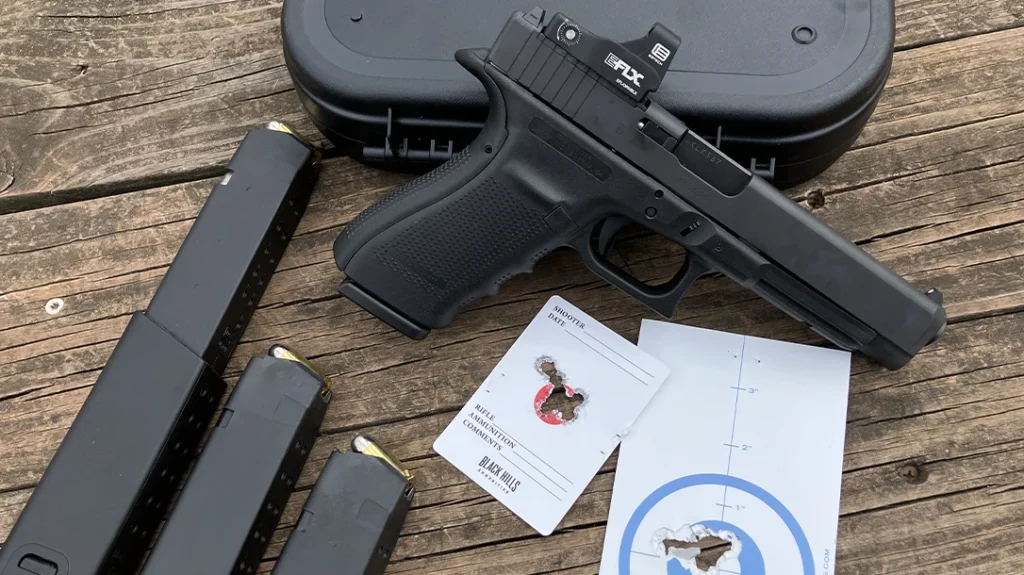
| Federal 230-grain HST | |
| Average Velocity | 872 FPS |
| Best Group | 1.25 inches |
| Winchester PDX1 230-grain | |
| Average Velocity | 933 FPS |
| Best Group | 1.00 inches |
| Black Hills 230-grain JHP | |
| Average Velocity | 856 FPS |
| Best Group | 1.75 inches |
| Hornady 230-grain XTP | |
| Average Velocity | 971 FPS |
| Best Group | 1.25 inches |
Advertisement — Continue Reading Below
Advertisement — Continue Reading Below

